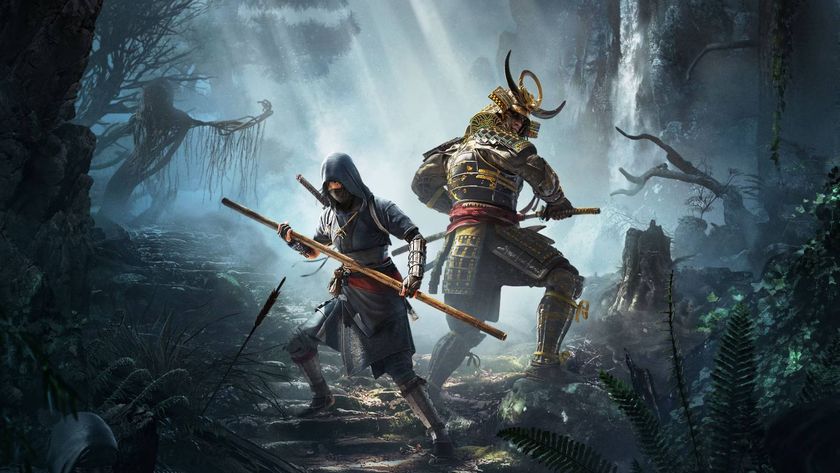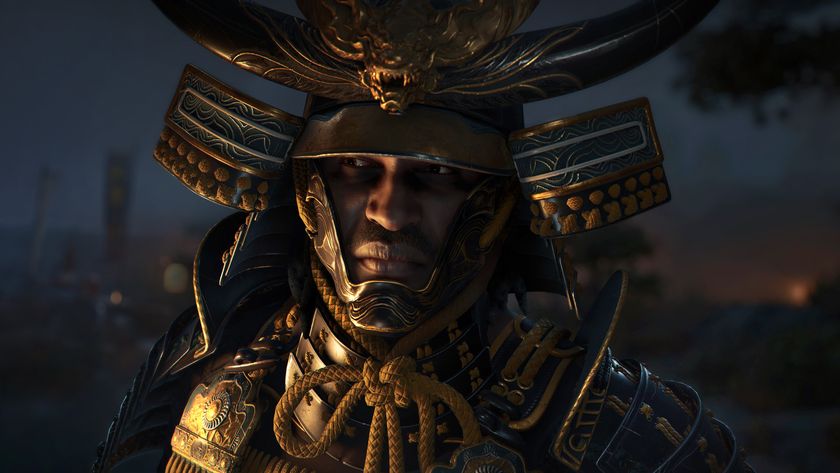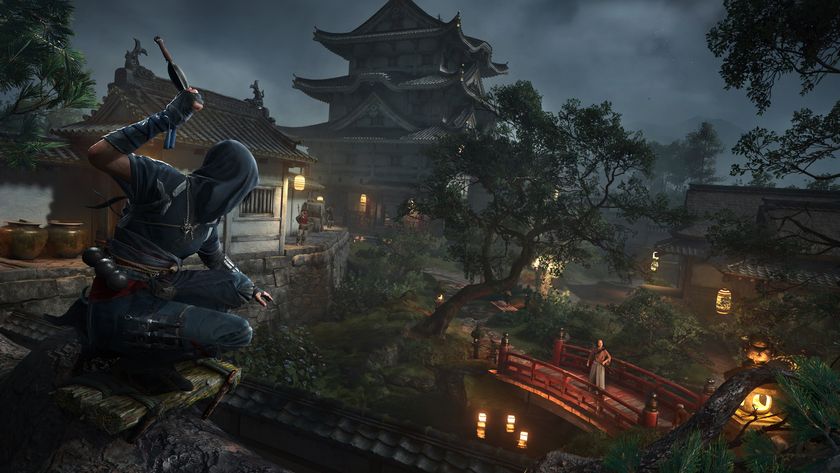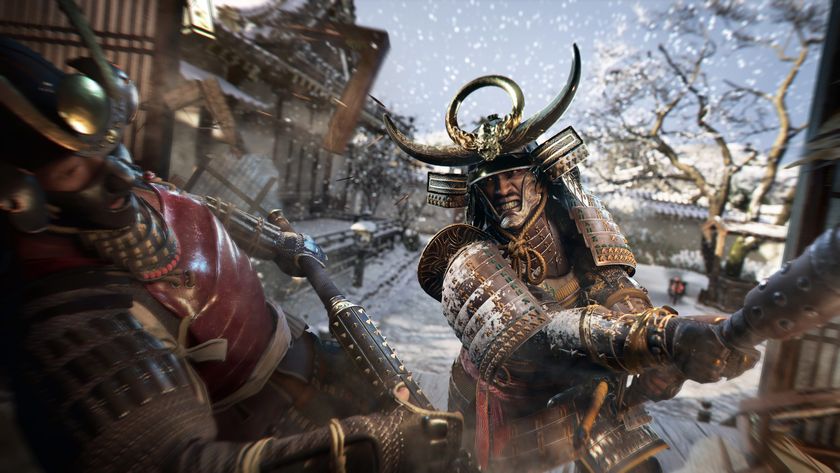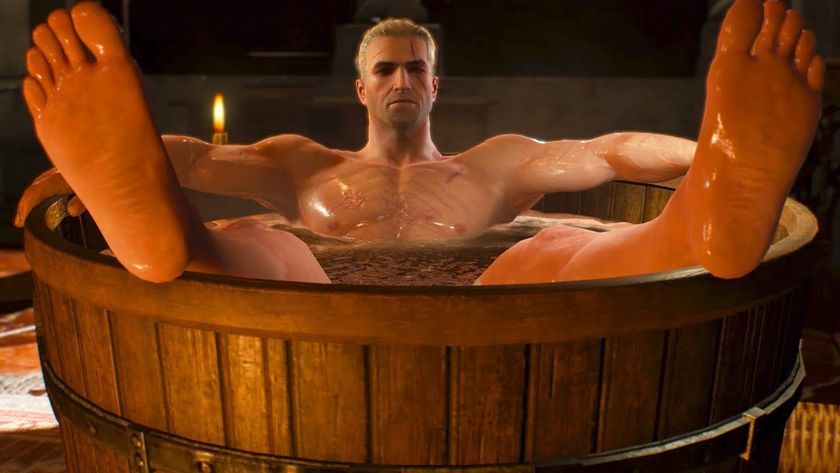Assassins Creed III First look at the Revolution through Connors eyes
Game's creative director unveils colonial Boston, unruly wildlife, a wilderness playground and lots of cool new ways to kill
Boston’s Long Wharf is one of the city’s oldest landmarks, so it wasn’t much of a surprise that one of our early glimpses at Assassin's Creed III would begin there. What was a bigger surprise was how lively it was. As Connor – ACIII’s half-Mohawk, half-European protagonist – strolled down the pier en route to Bunker Hill (where its namesake battle was already beginning), a fishmonger shouted at him to buy his fish, a young newsboy harangued him to buy a paper (yes, ACIII adds children to the series), and a thief stole an apple from a vendor before hauling ass down the street. Things didn’t get really lively, however, until Connor reached a British checkpoint where the pier met the city proper.

The Redcoats thought he looked a bit suspicious (and who wouldn’t, really?), so they shouted at him to stop for inspection, at which point he dashed wildly past them, ducking under a volley of musket fire while the music swelled. Darting off the street with British troops in hot pursuit, Connor scrambled up the side of a building and dove through a window, momentarily startling an apartment dweller as he leapt through to the window on the other side. With the guards temporarily off his trail, he scaled what looked to be Boston’s Old State House, getting an eagle-eye view of the city in the process – and of the fortifications on Bunker Hill in the distance.
Out in the open
By now, you’re probably familiar with the basics: Assassin’s Creed III will be set during the American Revolution, and it’ll star an Assassin named Connor, who fights with – among many, many other weapons – an Assassin-styled tomahawk. You may even have known that, when it releases this October, ACIII will have been in development for three years (the longest gestation period for any of the AC games since the first one), and that it’s being worked on by the same core team that created Assassin’s Creed I and II (as well as Prince of Persia: The Sands of Time). Also, that team reportedly went straight to work on ACIII after finishing ACII, which should ease doubts that ACIII will continue the diminishing returns of Revelations.
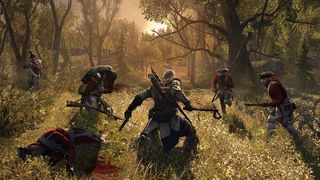
“My goal with this is, I’m really, really sick of shipping the first draft of games,” said Alex Hutchinson, the game’s creative director, during a presentation earlier this month. “Basically, almost every game you guys play is the first draft. Very few studios have the time or the ability to go back and redraft the games they work on. We really want to do this. Our goal, and it sounds kind of cheesy, is to really ship AC 3.5, not just AC III. So go back, work on things like tone, really look at specific scenes to make sure they’re communicating what we want, look at the pacing, look at the overall delivery.”
Connor’s adventure – which spans 30 years, from 1753 to 1783 – will bring him into contact with historical figures such as George Washington, Charles Lee, Paul Revere and Benjamin Franklin (who, despite working with Connor, won't be a 1:1 analogue to Assassin’s Creed II’s Leonardo Da Vinci, as Franklin was in France during the bulk of the Revolution). It’ll also focus mainly on Boston and New York, with lots of wilderness in between. However, those won’t be the extent of the game’s locales.
“We goofed around with Philadelphia for a while, and you go there in specific scenes,” said Hutchinson. “But it’s not going to be a big, open city. The problem with Philadelphia is… it’s one of the first planned cities in America, and so it’s very straight and very gridded. And so you have monstrous technical problems, like you can see eight miles down a straight street, and it’s very boring. Navigating something that’s purely gridded really just doesn’t work for our game.“
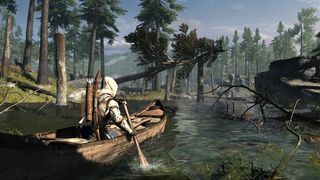
While we caught a few glimpses of the cities during Hutchinson’s presentation, the wilderness is what we got the best look at, and with good reason: it’s about 1.5 times the size of Assassin’s Creed Brotherhood’s version of Rome, and the development team seems awfully proud of it.
Sign up to the 12DOVE Newsletter
Weekly digests, tales from the communities you love, and more
“This America of the 18th century is not as built-up as it is now; it’s certainly not as built-up as the European cities we were used to building in the past,” Hutchinson said. “Nature is a much more potent force. It’s much more present. So what we wanted to do was build a character who’s as nimble, as agile and as functional in a wilderness setting as previous Assassins were in the city.”
To that end, Hutchinson and his team focused on turning the 18th-century American frontier into a vast, living playground. Animals play a big role; at one point during the demo, for example, Connor found the body of a Redcoat he’d been tracking, only to be attacked by the bear that had killed him (which he then killed, of course). At two other points (during what we were told was target footage), Connor snatched a musket from an American encampment and used it to kill a deer, and later witnessed his British target being attacked and mauled by a pack of wolves. You’ll also be able to skin these animals after you hunt them, an addition that, Hutchinson said, the team thought was pretty unique – until Red Dead Redemption did it a few months after the ACIII team thought to add it.
Above: We also had a chance to briefly interview Hutchinson about the setting, Connor and some of the historical figures he'll meet
Even without the animals, though, ACIII treats its wilderness like an obstacle course, with erratically shaped trees whose huge branches present all kinds of cool, Tarzan-like running and climbing opportunities; cliffs that Connor can scale like the side of a building; and deep snow that he’ll sometimes have to take big, awkward steps to get through. In fact, almost all of the visuals and animations have been completely redone from scratch, with the wilderness setting in mind; the iconic Leap of Faith is the only one that’s getting recycled.
“We really believe that while a lot of games have done forests, nobody has really done forests that are an actual playground,” said Hutchinson. “If I’m walking around forests in most games, the trees may as well be lampposts. All they are is obstacles; I just avoid them. We wanted to make trees, cliffs, rivers that were actual gameplay surfaces, that were 3D spaces that allowed the character, and the player, to experiment.”
